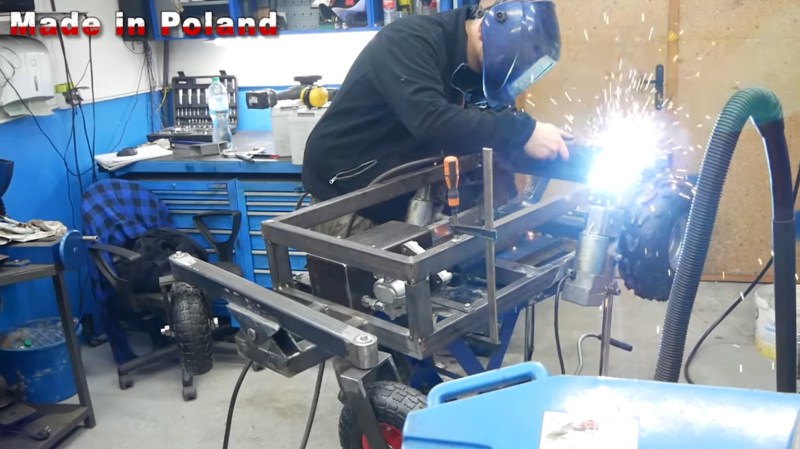Have you ever looked at a derelict electric wheelchair and thought “I bet I could make something great with that!” Of course you have- this is Hackaday, after all! And so did [Made in Poland], who managed to get a hold of a broken down electric wheelchair and put the full utility of his well equipped metalworking shop to work. The results? Lets just say it hauls.
What we really enjoyed about the build was that there wasn’t much that couldn’t be done by an average garage hacker with a drill press, angle grinder, and a stick welder. While it’s definitely nicer to have a lathe and a high quality welding table, plasma cutter, and everything in between, nothing that [Made in Poland] did in the video is such high precision that it would require those extensive tools. There may be some parts that would be a lot more difficult, or lower precision, but still functional.
Another aspect of the build is of course the control circuitry and user interface. Keeping the skid steer and castor approach meant that each motor would need to be controllable independently. To achieve this, [Made in Poland] put together a purely electromechanical drive controlled with momentary rocker switches and automotive relays to form a simple H-Bridge for each motor.
Of course you just have to watch until the end, because it really proves that a man will do anything to get out of hauling wood around! Old electric wheelchairs can also make a great base for big robots, as it turns out.
















I would have loved to have done something like that with my (late) father-in-law’s scooter.
But, no time or space to do it, so it was donated.
Batteries: If you connect negative to the chassis first and then your tool hits the chassis when connecting the positive you short out the battery – very bad.
If you connect the positive first and your tool hist the chassis it doesn’t matter because the chassis isn’t connected to negative. Then if your tool hits the chassis when your connecting negative then it doesn’t matter because they should be the same potential (voltage) anyway.
Same with wiring. Do all the positive wiring first with the negative disconnected. Positive always has more connections and more complex connections. Then do the negative wiring which is simpler.
I used to work in critical infrastructure where you can never turn anything off to work on it, unless it was many thousands of volts and it simply wasn’t possible to work on it without turning it off.
Appreciate the tip
Ummm: every power chair I have had the pleasure of pushing into the handicap van had independent wheel motor steering aka skid steer. Scooters, not so much.
And if he also uses it to carry the tool for making the firewood, he could say that it really hauls axe!
(Grinning, ducking, and running)